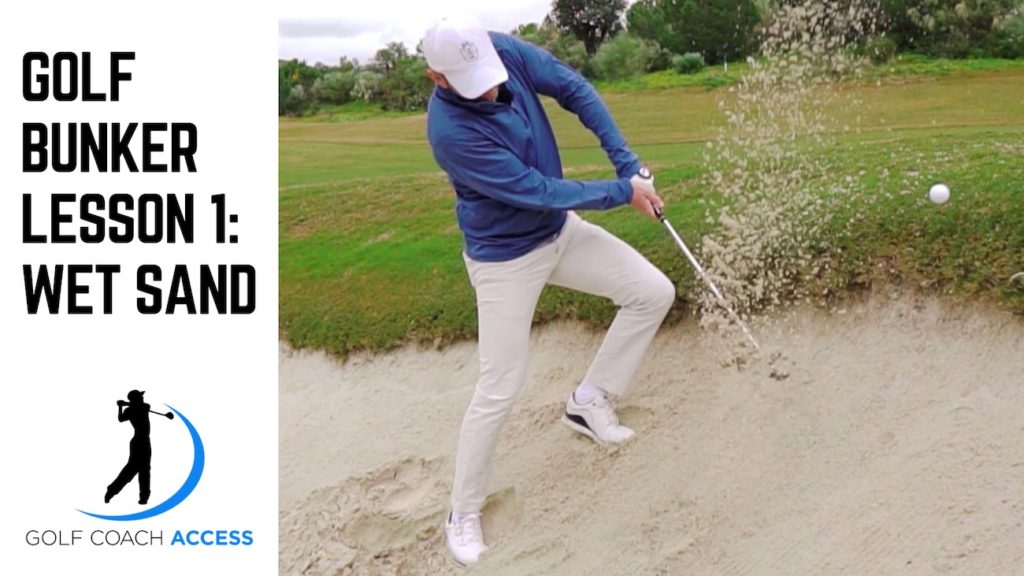In his time on the European Tour, David Griffiths was one of the best bunker players out there. In this series, Dr Noel Rousseau quizzes David on how he plays 6 distinctly different bunker shots. There is more in-depth bunker coaching in GOLF COACH ACCESS but this series will give you a flavour of how the maestro tackles a variety of shots from the sand. In this first video, we look at the bunker shot that we would all (probably) like to play the most – high shots from wet sand.
Bunker Shot Set-Up
One of the most notable aspects of his technique is that David does not stand open and swing across the ball in the way that high bunker shots used to be taught. From what we now know about how the ball and clubface interact, this is simply not necessary and merely complicates the shot.
Stand fairly square and have as much as 80% of your weight on your front foot. This will ensure that the club hits down into the sand and we don’t skull the ball into the face. Don’t worry about digging the club into the sand, the way that we use the bounce will take care of that.
You need to have the clubface extremely open so that it appears flat on the sand. This is done merely by rotating the handle in your grip. Don’t be afraid to really crank it open, you are not only adding loft but also exposing the bounce so the club will skid effortlessly through the sand.
David talks about having the club shaft ‘back and down’ at address. This simply means having your hands low and keeping them behind the ball, so to eliminate any forward shaft lean.
Bunker Shot Swing
If you are going to create height on your bunker shots then you need to keep the loft of the club and create a lot of clubhead speed. The loft is dealt with by maintaining the cupped angle in the left wrist.
The club speed in a bunker is all created with arms and wrist. We need to keep the body still and stable so plenty of wrist hinge is required to get the ‘zip’ through the sand.
Playing From Wet Sand
Wet bunkers needn’t cause a problem. The top is likely to be compact so you really do need to keep your weight forward and hit down with the back of the club to break that top layer. Again, if you are using the bounce then you can smash down fairly aggressively and the club will skid under the ball. The ball will come out with more speed from wet sand so you will need to adjust your speed to suit the shot.
Movement Psychology
I see too many golfers caught in a bind and wrestling with their intentions with this shot.
On the one hand, we need plenty of speed but if we thin the shot it is going flying over the green with great vigour – and that is a scorecard wrecker!
However, if we swing slowly to hedge our bets, the club makes the perfect contact with the sand but the ball stays in the bunker.
This is a cycle you must break and that can only be done by getting yourself in the practice bunker to work on these two fundamentals:
1. Confidence in your connection and use of the bounce
2. From that, you will be more committed to speed and loft.
Troubleshooting
When the face is that open, won’t the ball go to the right?
If your hands are low then it tilts the clubface back towards you so the ball actually flies straight and high. Be sure to keep your hands low through impact.
The ball isn’t going high enough?
You must have less loft at impact. This can be because you have flattened the angle in your lead wrist or you have the handle either too forward or too high at impact.
Alternatively, there just isn’t enough speed on the club to get the height.
Why isn’t the ball flying far enough to get out?
You are digging the front edge of the sand wedge into the sand, in which case learn to use the bounce more.
Alternatively, you are being too tentative and need to create more clubhead speed.
